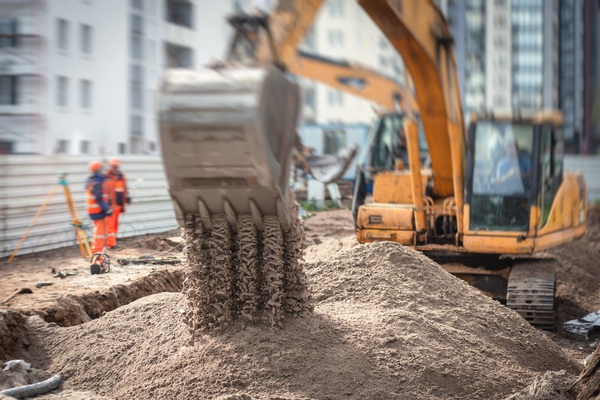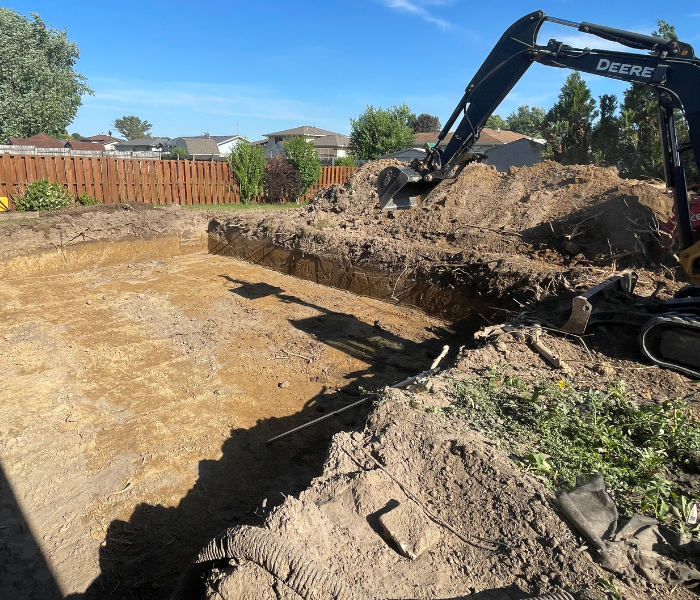Lancaster Trenching - Professional Trenching Solutions in Lancaster, Ohio
Wiki Article
Revealing the Art of Excavation: Pro Tips for Safe and Efficient Digging
In the realm of excavation, the proficiency of productive and secure excavating is an art form that requires adherence, precision, and expertise to recognized practices. As dirt is turned and earth is relocated, the complexities of excavation reveal themselves, requiring a keen understanding of tools, soil make-up, safety and security procedures, and ecological considerations. The know-how needed to browse these elements effectively can imply the distinction between an effective excavation job and a prospective catastrophe. By unraveling the layers of this complex process, a globe of insights and approaches awaits those looking for to boost their excavation skills to brand-new heights.Significance of Appropriate Tools
To ensure the security and performance of any kind of excavation project, using the proper tools is paramount. The right tools not just boost performance but also reduce threats connected with digging. Excavation projects vary in range and intricacy, varying from tiny residential landscaping jobs to large-scale building endeavors. No matter of the task dimension, having the proper tools can make a significant difference in the result.Excavators are basic items of equipment in any type of digging operation. These versatile devices come in numerous sizes to match different job needs. Miniature excavators are optimal for smaller sized jobs, while bigger excavators tackle a lot more considerable tasks successfully. Backhoes are an additional important tools type, combining the features of a loader and an excavator in one machine. They are useful for jobs calling for adaptability and ability to move.
Bulldozers succeed in jobs that require pushing big amounts of dirt or particles. By spending in the appropriate tools, excavation tasks can be finished securely, on time, and with precision.
Recognizing Soil Composition
A detailed understanding of soil composition is essential for carrying out excavation tasks with accuracy and safety. Understanding the different kinds of dirt is critical as it straight impacts excavation methods, equipment option, and total task performance. Dirt make-up generally consists of four main components: sand, silt, clay, and raw material. Each element has distinct residential or commercial properties that influence how soil reacts to excavation processes.Sand bits are the largest and offer good water drainage yet use little cohesion. Silt particles are smaller sized than sand yet larger than clay, providing moderate water drainage and communication. Clay particles are the tiniest and give high communication however poor drainage. Raw material, such as rotting plant material, influences dirt fertility and stability.
Prior to beginning excavation, carrying out dirt examinations to identify its make-up and attributes is vital. This details assists in picking the suitable devices, carrying out safety steps, and creating excavation methods tailored to the particular soil conditions - lancaster excavation. By understanding soil composition, excavation professionals can boost task results while making sure safety and adherence to ideal methods
Precaution and Protocols
Recognizing dirt structure is the keystone whereupon safety steps and protocols for excavation tasks are constructed, ensuring the wellness of workers and the success of the venture. When it involves safety during excavation, there are numerous vital measures that need to be executed to mitigate risks and stop crashes.Primarily, prior to any kind of digging commences, a detailed inspection of the site must be carried out to recognize any kind of possible threats such as below ground energies, unpredictable dirt problems, or close-by structures that might position a risk. It is important to have a qualified individual manage the excavation procedure to make sure that all security procedures are complied with strictly.
Additionally, all employees entailed in the excavation has to be effectively learnt safe excavating techniques and the correct operation of devices. Individual protective equipment (PPE) such as construction hats, high presence garments, handwear covers, and safety and security boots must be put on in all times to reduce the threat of injuries. excavating ohio. Normal safety and security conferences and tool kit talks need to additionally be conducted to maintain all employees educated concerning potential dangers and strengthen secure work practices. By sticking to these safety and security actions and methods, excavation projects can be completed successfully and without event.
Reliable Excavation Preparation
When starting an excavation project, precise preparation is vital to make sure performance, security, and successful results. Reliable excavation planning involves several vital actions that are crucial for the smooth execution of the task. The primary step is to carry out a complete site analysis to determine any prospective dangers, such as underground utilities or unsteady dirt problems. This details is important for creating a detailed excavation plan that includes precaution and run the risk of reduction methods.Once the site evaluation is full, the next action is to create a clear timeline and timetable for the excavation activities. This consists of establishing the sequence of tasks, tools needs, and workforce allotment. Proper organizing assists avoid hold-ups and ensures that the project remains on track.

Moreover, interaction amongst all team members is extremely important during the preparation stage. Clear directives, normal updates, and reliable coordination are essential for a successful excavation project. By investing time and initiative in precise preparation, excavation groups can considerably boost efficiency, minimize threats, and accomplish successful results.

Taking Care Of Ecological Factors To Consider
With enhancing focus on environmental sustainability in building methods, handling environmental factors to consider has become an essential element of excavation tasks. Excavation activities have the potential to impact the surrounding environment with soil disintegration, debris runoff, habitat disturbance, and contamination of water resources. To alleviate these risks, it is important to execute finest methods that focus on environmental management.
Moreover, proper waste management is essential to stop dirt and water contamination. Carrying out procedures for the disposal of dangerous materials, recycling of waste materials, and reducing making use of dangerous chemicals can considerably reduce the environmental impact of excavation jobs. By incorporating these methods into excavation preparation and implementation, construction companies can make certain that their projects are not only secure and effective however also environmentally liable.
Final Thought
Finally, understanding the art of excavation calls for a complete understanding of appropriate equipment, dirt structure, precaution, and efficient planning. By adhering to these guidelines and taking into consideration ecological factors, excavations can be performed safely and efficiently. It is vital to prioritize safety and security and efficiency in every digging job to ensure effective outcomes.As dirt is turned and planet is moved, the ins and outs of excavation reveal themselves, requiring a keen understanding of tools, soil structure, safety procedures, and ecological considerations.To make certain the security and performance of any excavation task, utilizing the proper equipment is vital.A thorough excavating ohio grasp of dirt composition is essential for implementing excavation projects with precision and safety and security. Comprehending the various types of dirt is important as it straight impacts excavation techniques, tools selection, and general project effectiveness. By recognizing soil structure, excavation professionals can boost project results while guaranteeing safety and security and adherence to finest techniques.
Report this wiki page